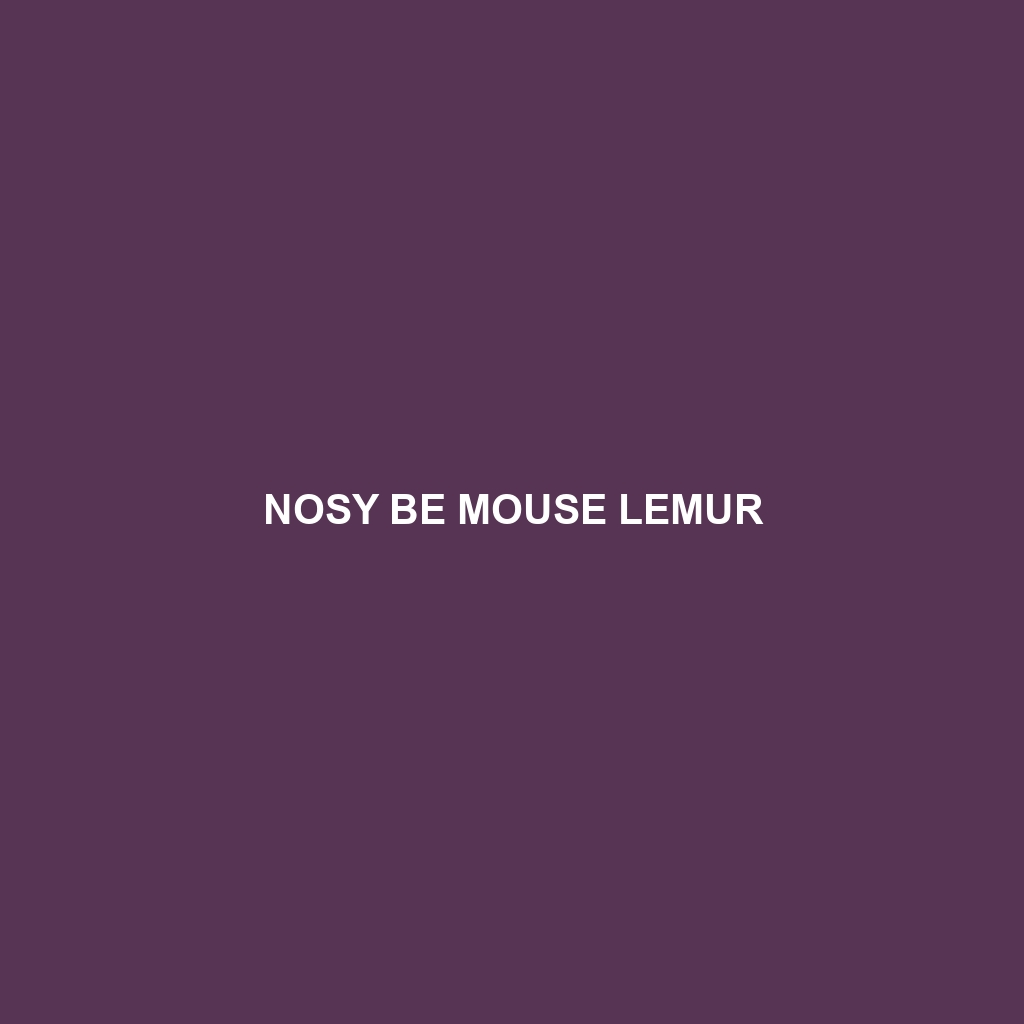Nosy Be Mouse Lemur – Species Description
Common Name: Nosy Be Mouse Lemur
Scientific Name: Microcebus rufus
Habitat: The Nosy Be Mouse Lemur is primarily found on the island of Nosy Be and surrounding areas off the northwest coast of Madagascar. This region is characterized by its tropical monsoon climate, featuring lush rainforests and diverse ecosystems that provide the ideal habitat for this small primate. These lemurs inhabit dense vegetation and are often located in both primary and secondary forests, making them reliant on these specific environments for survival.
Physical Characteristics: The Nosy Be Mouse Lemur is one of the smallest primates in the world, measuring approximately 26 to 28 centimeters in length, including its long, bushy tail. Its fur is typically a warm brown color, with a slightly paler underside, and it features large, expressive eyes that are adapted for its nocturnal lifestyle. Distinctive traits include its short snout and large ears, which enhance its hearing capabilities, making it an incredible forager during the night.
Behavior: Known for its nocturnal habits, the Nosy Be Mouse Lemur is predominantly active at night (crepuscular) and uses a variety of vocalizations to communicate with others in its social group. These lemurs exhibit arboreal behaviors, spending most of their time in trees, where they leap between branches with agility. Socially, they are often seen in small groups, engaging in grooming behaviors that strengthen social bonds.
Diet: The diet of the Nosy Be Mouse Lemur is primarily fruit-based, but they also consume insects, flowers, and nectar. In the wild, their feeding habits are vital for their survival, as they play a role in seed dispersal, contributing to the health of their forest ecosystem. Their keen sense of smell assists them in locating ripe fruits and other food sources during their nightly foraging excursions.
Reproduction: The breeding season for the Nosy Be Mouse Lemur generally occurs between September and November. After a gestation period of approximately 60 days, females typically give birth to one or two offspring. Mothers are highly attentive and nurturing, providing care and protection until the young are capable of independent survival, which can take several months.
Conservation Status: The Nosy Be Mouse Lemur is currently classified as endangered due to habitat loss from deforestation, agriculture, and human encroachment. Conservation efforts are essential to protect this species and its habitat, highlighting the urgent need for sustainable practices in Madagascar.
Interesting Facts: This unique species is known for its ability to leap across large distances relative to its body size, often jumping up to 5 meters (16 feet). Additionally, they possess a unique method of storing fat in their tails, which serves as a crucial energy reserve during food scarcity. Their adorable appearance and intriguing behaviors have made them a subject of fascination among wildlife enthusiasts and researchers alike.
Role in Ecosystem: The Nosy Be Mouse Lemur plays a vital role in its ecosystem as both a seed disperser and a prey species for larger predators. By feeding on various fruits and flowers, they help in the propagation of plant species, maintaining biodiversity within their habitat. Their interactions with other species highlight their importance as a key player in Madagascar’s complex ecological web.
